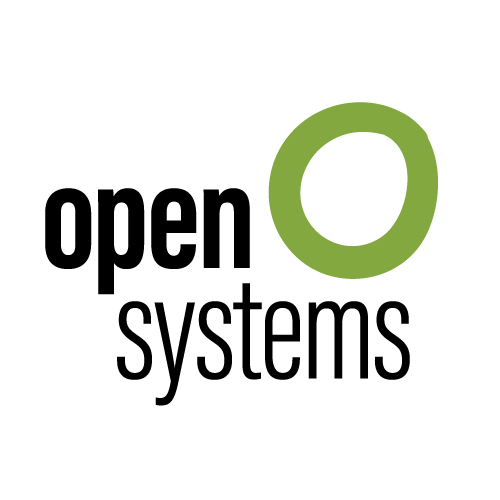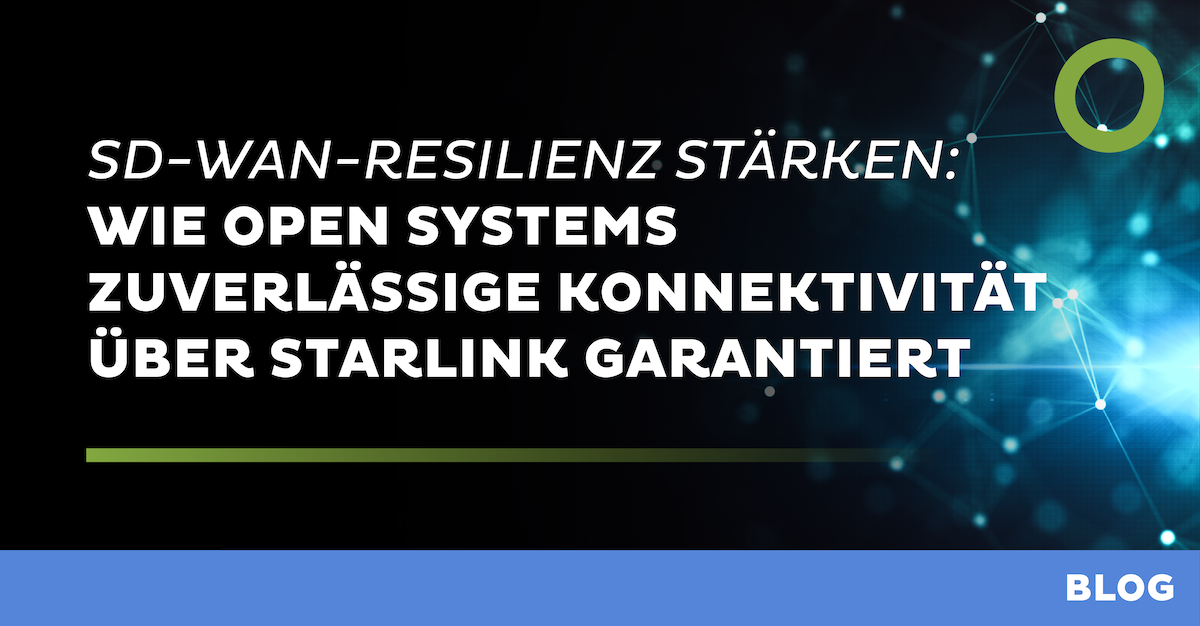
Alles Wissenswerte zur Zero-Trust-Architektur


Die Zero-Trust-Architektur hat sich in den vergangenen Jahren zu einem zentralen Bestandteil moderner Cybersecurity-Strategien entwickelt. Insbesondere in einer zunehmend vernetzten, cloudbasierten und dezentral organisierten Arbeitswelt. Im Kern verfolgt das Modell das Prinzip „Nie vertrauen, immer überprüfen.“ Das bedeutet: Der Zugriff auf Daten und Systeme wird streng überprüft – unabhängig von Standort, Nutzer oder Gerät. Ziel ist es, sensible Informationen wirksam vor internen Fehlern und externen Angriffen zu schützen, die mitunter irreparable Schäden verursachen können.
Unternehmen, die Sicherheit und Effizienz gleichermassen priorisieren, profitieren von diesem Ansatz. Vorausgesetzt, sie setzen auf die richtigen Komponenten und Mechanismen. Erfahren Sie, was hinter der Zero-Trust-Architektur steckt und wie moderne Unternehmen damit proaktiv ihre Daten und Beschäftigten schützen.
Was ist eine Zero-Trust-Architektur?
Die Zero-Trust-Architektur ist ein digitales Sicherheitsmodell, das von allen Nutzern und Geräten eine kontinuierliche Authentifizierung und Autorisierung für den Zugriff auf Informationen, Anwendungen und Daten verlangt. Diese Zugriffsbeschränkungen gelten sowohl für interne als auch für externe Nutzer, um sowohl beabsichtigte als auch unbeabsichtigte Sicherheitsverletzungen im Netzwerk zu verhindern. Grundsätzlich geht ein Zero-Trust-Netzwerk immer davon aus, dass das Netzwerk sowohl internen als auch externen Bedrohungen ausgesetzt ist.
Remote-Arbeit, hybride Cloud-Ressourcen und andere geschäftliche Kommunikation, die auf Konnektivität angewiesen sind, rücken die Zero-Trust-Architektur zunehmend in den Mittelpunkt der Cybersicherheit. In einer Zeit, in der die digitale Transformation Unternehmen weltweit erfasst, sind sichere Netzwerke und ein zuverlässiger Internetzugriff unabdingbar für wettbewerbsfähiges Arbeiten im grossen Massstab. Zero Trust nutzt Konzepte wie Zero Trust Network Access (ZTNA), um Geräte und Endpunkte über mehrere Standorte hinweg abzusichern. Unabhängig davon, wie viele Personen auf sie zugreifen. Das Ergebnis: produktive, effiziente und vor allem sichere Zusammenarbeit.
Wie funktioniert eine Zero-Trust-Architektur?
Ein Zero-Trust-Framework nutzt moderne Technologien zur Identifikation und Verifizierung von Nutzern und Systemen, die auf Netzwerke oder Datenendpunkte zugreifen wollen. Dazu gehören: Multi-Faktor-Authentifizierung, Next-Generation Endpoint Security und Cloud-Workload-Technologien. Sie alle schützen Endpunkte wie Cloud-Systeme, E-Mail, verschlüsselte Daten und viele weitere sensible Bereiche. Eine Zero-Trust-Architektur ist darauf ausgelegt:
- den gesamten Netzwerkverkehr zu protokollieren und zu analysieren
- den Netzwerkzugriff gezielt zu beschränken und zu überwachen
- kontinuierlich alle Netzwerkressourcen zu verifizieren
Vielleicht fragen Sie sich, worin sich dieses Modell von anderen Sicherheitsansätzen unterscheidet. Während herkömmliche Systeme häufig auf „Vertrauen nach Verifizierung“ setzen, geht Zero Trust einen Schritt weiter und eliminiert diesen potenziellen Schwachpunkt. Auch wenn es bequem erscheint, bekannten Nutzern oder Geräten zu vertrauen, birgt dies erhebliche Risiken. Von versehentlichen Fehlern bis hin zu gezielten Angriffen.
Ein Zero-Trust-System beseitigt Risiken, indem es davon ausgeht, dass alle Nutzer und Geräte vor dem Zugriff auf sensible Systeme authentifiziert werden müssen. Unabhängig davon, wie vertrauenswürdig sie erscheinen oder wie praktisch das Endgerät ist. Zero Trust überzeugt, weil es Sicherheit durch kontinuierliche Verifizierung bietet, ohne die Konnektivität oder Prozesse auszubremsen. Ein wirksames System definiert klare Regeln, etwa durch rollenbasierte Konten mit abgestuften Rechten entsprechend der Zuständigkeit und Funktion im Unternehmen.
Eine Zero-Trust-Architektur stellt sicher, dass alle Nutzer und Anwendungen die IT-Infrastruktur zuverlässig unterstützen. Dies geschieht durch Echtzeiteinblicke in den Status aller Beteiligten und Komponenten im Ecosystem, unter Berücksichtigung relevanter Faktoren wie:
- Geografischer Standort
- Benutzer-ID und -typ
- Anmeldedaten
- Endgeräte-Hardware
- Software- und Firmware-Versionen
- Installierte Apps auf dem Endgerät
- Risikobewertung durch Monitoring und Sicherheitsanalysen
- Nutzerverhalten und Aktivitätsmuster
ITipp: Sie möchten die Grundlagen in aller Kürze kennenlernen? Dann laden Sie unseren Leitfaden „Zero Trust Architecture in 3 Minutes“ herunter.
Brauchen Sie Zero Trust?
- Die Sicherheitslandschaft entwickelt sich rasant. Damit wachsen auch die Herausforderungen, denen sich Unternehmen bei der Entwicklung robuster Cybersicherheitsmassnahmen gegenübersehen. Angesichts dieser Dynamik drängt sich die Frage geradezu auf: „Wer sollte dringend über die Einführung eines Zero-Trust-Frameworks nachdenken?“ Denn in bestimmten Szenarien ist die Einführung dieses zukunftsorientierten Security-Modells weniger eine Option als vielmehr ein Muss.
- Eine Frage der Compliance-Pflicht: Wenn Ihr Unternehmen vertrauliche Daten wie Finanzunterlagen, Gesundheitsinformationen oder personenbezogene Daten (PII) verarbeitet, speichert oder überträgt, müssen Sie in aller Regel Compliance-Vorschriften wie DSGVO, HIPAA oder PCI DSS einhalten. Mit den detaillierten Kontrolle des Datenzugriffs und der kontinuierlichen Überwachung durch das Zero-Trust-Framework ist es leichter, diese strengen Standards einzuhalten. Dadurch verringert sich auch das Risiko für unnötige Bussgelder, die mit der Nichteinhaltung verbunden sind.
- Verteilte Belegschaft: zentralisierten Belegschaften, die an einen einzigen Standort gebunden sind, werden immer seltener. Mit dem Trend zur Remote-Arbeit greifen die Beschäftigten von den verschiedensten Standorten aus auf Unternehmensressourcen zu, oft über private Geräte. Dies stellt die traditionellen Sicherheitsmodelle vor enorme Schwierigkeiten, da sie nicht für solch komplexe Anforderungen ausgelegt sind. Durch die Implementierung eines Zero-Trust-Frameworks ist sichergestellt, dass jeder Touchpoint in dieser vielfältigen Landschaft authentifiziert und kontinuierlich überwacht wird. Dies reduziert das Risiko für Sicherheitsverletzungen signifikant.
- Komplexe Cloud-Umgebungen: Nutzen Sie bereits eine Multi-Cloud- oder Hybrid-Cloud-Infrastruktur, dann kennen Sie die immensen Vorteile und sind sich der damit verbundenen Sicherheitsherausforderungen bewusst. Ein einziger Fehler bei der Zugriffskontrolle kann Ihr gesamtes System anfällig machen. Komplexe Umgebungen brauchen robuste Zugriffskontrollen, die sich an die Nuancen komplexer Cloud-Ökosysteme anpassen können. Diese bietet das Zero-Trust-Framework mit seinem Ansatz „Nie vertrauen, immer überprüfen“.
- Hochwertiges geistiges Eigentum: Wer mit proprietären Informationen oder geistigem Eigentum wie Patenten, Designs oder Softwarecodes arbeitet, habt im Falle einer Sicherheitsverletzung sogar noch mehr zu verlieren. Zero Trust sichert Ihre wertvollsten Assets durch Mikrosegmentierung des Zugriffs und die Durchsetzung der Multi-Faktor-Authentifizierung. Damit sichergestellt ist, dass nur autorisierte Personen Zugriff auf hochsensible Informationen haben.
- Dynamische Geschäftspartnerschaften: Wer auf die Zusammenarbeit mit Dritten wie Anbietern, Zulieferern oder Freiberuflern angewiesen ist, für den vervielfachen sich die Sicherheitsrisiken. Jeder externe Eintrittspunkt in Ihr Netzwerk könnte potenziell ausgenutzt werden. Das Zero-Trust-Framework minimiert dieses Risiko, indem es strenge Zugriffskontrollen auch für Drittbenutzer durchsetzt und so Ihre Gefährdung durch potenzielle externe Bedrohungen begrenzt.
Gute Gründe für eine Zero-Trust-Architektur
Fast jedes Unternehmen kann von Zero Trust profitieren. Auch Ihr Unternehmen sollte über diese Sicherheitsarchitektur nachdenken, wenn mehrere der folgenden Szenarien zutreffen:
Hybrides Datenmanagement: Wenn Sie ein Multi-Cloud-, Hybrid- oder Multi-Identity-System nutzen, ist Zero Trust unerlässlich, um internetgestützte Daten zu sichern. Je stärker die Zugriffskontrolle, desto besser der Schutz.
Branchenspezifische Vorgaben: Wenn ein Compliance-Verstoss existenzbedrohend für Ihr Unternehmen sein kann, senkt Zero Trust das Risiko deutlich.
Remote-Arbeitsmodelle: Im Fall einer verteilt arbeitenden Belegschaft brauchen Ihre Beschäftigten ein Zero-Trust-System, um Datenpannen ausserhalb der Büroinfrastruktur zu verhindern.
Zentrale Bausteine der Zero-Trust-Architektur
Drei Grundprinzipien machen Zero Trust erfolgreich: Nutzer-Authentifizierung, Geräte-Authentifizierung und Vertrauen. Daher sollte eine zuverlässige Zero-Trust-Architektur mindestens folgende Komponenten umfassen:
Identitätsmanagement: Sämtliche Geräte, Anwendungen, Endpunkte und Nutzer müssen durch starke Authentifizierungsmethoden eindeutig identifizierbar sein.
Datenverwaltung: Die Organisation und Klassifizierung von Daten ist die Grundlage jedes Sicherheitskonzepts. Zusammen mit Verschlüsselung und anderen Massnahmen.
Transparenz über Geräte, Netzwerke und Endpunkte: Jeder Zugriffspunkt sollte sorgfältig überwacht werden. Insbesondere bei der Vergabe (oder Sperrung) von Zugriffsrechten.
Analysen: Die Dokumentation von Mustererkennung und Nutzerverhalten hilft, Risiken frühzeitig zu erkennen und zu minimieren.
Automatisierung und Tools: Durch den Einsatz moderner Sicherheitslösungen und Automatisierung (sowie ähnlicher Tools) lassen sich Bedrohungen schneller und präziser erkennen und beheben.
Vorteile einer Zero-Trust-Architektur
Ziel dieser Sicherheitsstrategie ist es, unternehmerische Risiken zu minimieren, Organisationen mehr Transparenz und Kontrolle zu geben und Datenpannen zu verhindern, die Geschäftsprozesse gefährden könnten. Ein Zero-Trust-Modell bietet dabei unter anderem folgende Vorteile:
-
- Schutz personenbezogener Daten
- Schutz geistigen Eigentums
- >Schutz finanzieller Informationen
- Sichere Konnektivität ohne Risiko für sensible Daten
- Förderung sicherer Geräte- und Datennutzung durch Beschäftigte
- Proaktive Tools zur Bedrohungserkennung und -behebung
- Bessere Netzwerk-Performance und schnelleres Troubleshooting
- Intuitive, leistungsstarke Monitoring- und Logging-Tools
- Schnellere Erkennung und Reaktion bei Sicherheitsvorfällen
Zero Trust, Zero Worry
Mit einer integrierten Zero-Trust-Architektur hält Ihr Unternehmen Schritt mit der digitalen Transformation, ist produktiver und minimiert Risiken. Möchten Sie mehr über Zero Trust erfahren? Unser Zero Trust Network Access (ZTNA)-Produkt und unsere SASE Experience bieten von überall aus sicheren Zugriff und schützen zugleich Ihr Netzwerk.
Je vertrauenswürdiger Ihr System ist, desto unbesorgter können Sie Ihr Business vorantreiben – doch am Anfang steht eine professionelle Analyse.
Kontaktieren Sie Open Systems, um noch heute einen besseren Einblick in Ihr Netzwerk zu erhalten und Optimierungslösungen zu entdecken!
Lassen Sie die Komplexität
hinter sich
Sie möchten auch von der Open Systems SASE Experience profitieren? Unsere Experten helfen Ihnen gern weiter.
Kontakt


